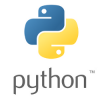- Posted By: freeproject
- Comments: 0
Introduction to Fake Product Review Detection and Sentiment Analysis
In today's digital age, online reviews play a crucial role in shaping consumer decisions. However, the rise of fake product reviews has made it challenging for customers to trust what they read. This is where Fake Product Review Detection and Sentiment Analysis comes into play. For students, especially those in their final year, working on Final Year Projects on Fake Product Review Detection and Sentiment Analysis can be incredibly rewarding. These projects not only enhance your technical skills but also provide real-world solutions to a pressing problem. If you're looking to get started, you can easily Download Computer Science Students Project on Fake Product Review Detection and Sentiment Analysis to understand the basics and build upon them.Developing Fake Product Review Detection and Sentiment Analysis Projects
Creating a project on Fake Product Review Detection and Sentiment Analysis involves several steps. First, you need to gather a dataset of product reviews. Next, you will use machine learning algorithms to analyze these reviews and detect any fake ones. For those wondering How to develop Fake Product Review Detection and Sentiment Analysis, there are numerous resources available online. You can find Mini project download on Fake Product Review Detection and Sentiment Analysis to get a head start. These mini projects are perfect for beginners and provide a solid foundation for more complex projects. For more advanced learners, there are Major project download on Fake Product Review Detection and Sentiment Analysis that delve deeper into the subject, offering more sophisticated techniques and algorithms.Live Projects and Source Code Downloads
One of the best ways to learn is by working on Live projects on Fake Product Review Detection and Sentiment Analysis. These projects give you hands-on experience and a better understanding of how to apply theoretical knowledge in real-world scenarios. Additionally, you can Download Computer Science Students Project on Fake Product Review Detection and Sentiment Analysis to see how others have approached the problem. Many of these projects come with Fake Product Review Detection and Sentiment Analysis Source Code Download, allowing you to study and modify the code to suit your needs. For B.Tech students, working on Fake Product Review Detection and Sentiment Analysis B.Tech Projects can be a significant milestone in your academic journey. These projects not only add value to your resume but also prepare you for future challenges in the tech industry.Online buyers are becoming increasingly aware of fake product reviews. Most consumers consult product reviews and ratings before making any purchases from online retailers. Consequently, it is essential for e-commerce website owners to monitor product descriptions and reviews. When e-commerce websites offer products with poor reviews, consumers often hold the website accountable rather than the product manufacturers, potentially damaging the e-commerce brand's reputation. Competitors sometimes post fake reviews to boost their own sales. Therefore, e-commerce website owners must perform accurate sentiment analysis to detect and remove fake product reviews from their portals. We have developed a system called "Fake Product" to assist online store owners in this task.
Our product review monitoring and removal system includes a robust framework for the sentiment analysis of genuine reviews to identify fake reviews on e-commerce portals. This authentic review architecture can detect fake surveys conducted by social media optimization teams using unique IP addresses. We provide e-commerce owners with a login ID to access the framework securely. Using this ID, owners can view and provide feedback on various products. The framework tracks the client's IP address to verify the authenticity of reviews. If the system detects repeated fake reviews from the same IP address, it alerts the administrator to remove the review from the system. This technology helps customers find accurate product reviews and removes fake ones from the portal.
The following section outlines the Sentiment Analysis process to identify and remove fake product reviews from the portal:
Step 1: Data Preprocessing:
- First, we format the data to represent it properly for machine learning.
- Next, we clean the data to remove incomplete variables.
- Finally, we sample and reduce the data in real-time to meet algorithm and memory requirements.
Step 2: Tokenization: In this step, we break the data into words, phrases, and meaningful elements to explore the words present in a sentence.
Step 3: Stop-word Elimination: We focus on text mining to identify and remove negative stop words from reviews that should not be part of the opinion.
Step 4: Bag-of-words Model: We process our data for natural language processing (NLP) and consider individual words to assign them specific subjectivity scores.
Step 5: Training the Classifier: We train our system to identify fake product reviews using predictive test data analysis.
Step 6: Sentiment Analysis: We use Decision Tree Classifier and Naive Bayes to perform sentiment analysis on fake product reviews from the database and compare the results.
In this article, we demonstrated how proper sentiment analysis can help identify and remove fake product reviews from your portal.
Static Pages and Other Sections:
The following static pages are available in the Fake Product Review Detection and Sentiment Analysis project:
- Home Page with a user-friendly interface
- Home Page featuring an animated image slider
- About Us page describing the project
- Contact Us page
Technology Used in the Fake Product Review Detection and Sentiment Analysis Project:
We developed this project using the following technologies:
- HTML: Page layout design
- CSS: Styling and design
- JavaScript: Validation tasks and animations
- Python: Business logic implementation
- MySQL: Database management
- Django: Framework for project development
Supported Operating Systems:
This project can be configured on the following operating systems:
- Windows: Easily configured on Windows OS. Requires Python, PIP, and Django.
- Linux: Compatible with all versions of Linux OS.
- Mac: Easily configured on Mac OS.





































